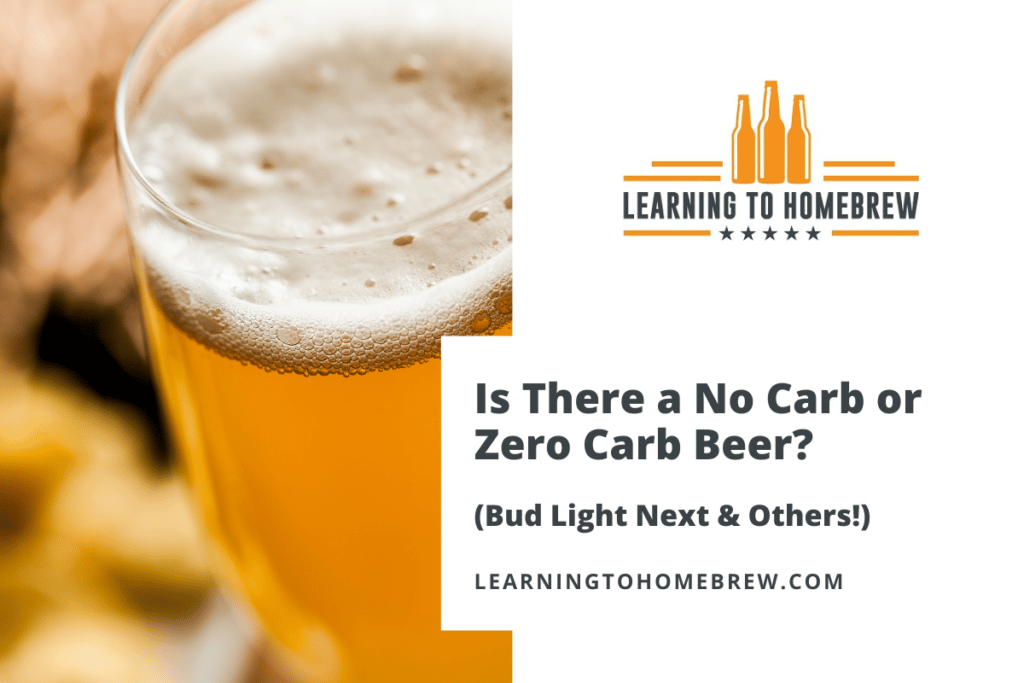Ever had a lager at a bar and thought “I could make this better”? Brewing a Standard American Lager is not as simple as the commercial examples make it appear. It is a highly sensitive style.
Brew a refreshing Standard American Lager with soft water that has more chlorides than sulfates. Fill your grain bill with pale 2-row or 6-row malt with either corn or rice. Use American hop varieties or hops with floral, herbal, or spicy traits. Pick a yeast strain that has high attenuation, high flocculation, and no ester production.
There’s a lot more work that goes into an American lager than one would think at first glance. Keep reading for exactly what makes a perfect Standard American Lager and everything you need to know to brew one at home!
Topics We Cover
What is a Standard American Lager?
A Standard American Lager is an easy-drinking lager with a simple flavor profile meant to refresh.
American Lagers are usually balanced between light malt and hints of hop flavor. This style often has a sweet character due to the common use of corn adjuncts. When it comes to appearance, American Lagers are very light and pale. They range from pale straw to a more full yellow. They should always be clear with a light white head that doesn’t stay.
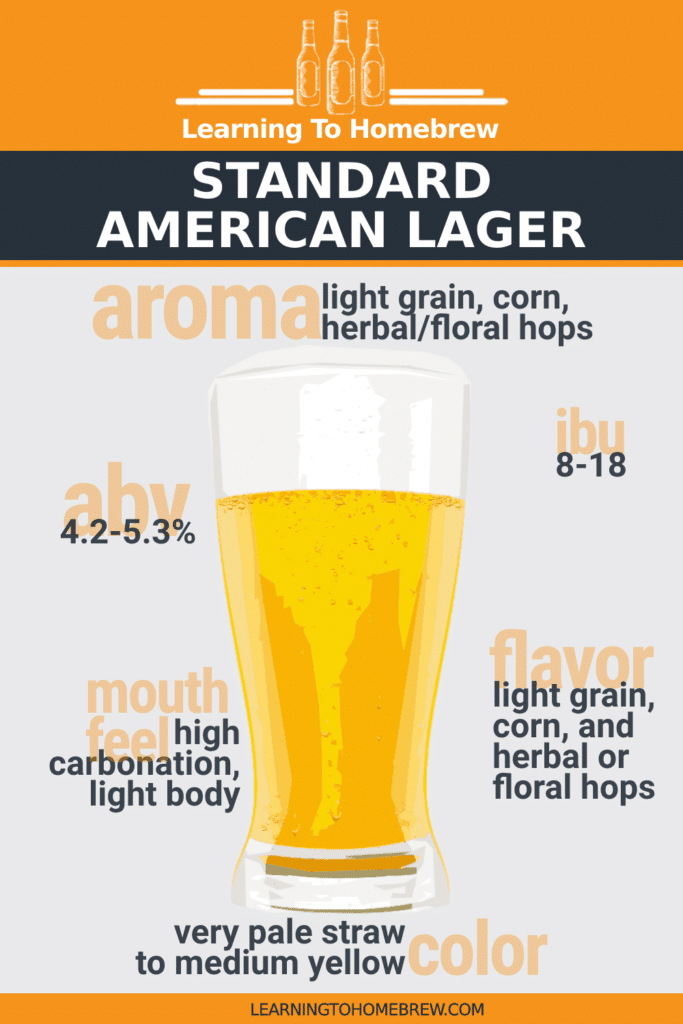
Defining characteristics of Standard American Lagers include:
- Color – 2-3.5 SRM (very pale straw to medium yellow)
- Common flavor – Light grain, corn sweetness, herbal/floral hops
- Aroma – Light grain, corn, herbal/floral hops
- Mouthfeel – Light body, highly carbonated
- IBUs (Bitterness) – 8-18
- ABV – 4.2-5.3%
While not bold by any measure, American Lagers do have decent flavors present. The most common is a light grain or corn sweetness. Some will also have a low hop character – usually floral or herbal.
The aroma will reflect the flavors of the lager. That is to say, the aroma is light with notes of grain and occasionally hop aromas.
An American Lager should be highly carbonated. The typical mouthfeel is also light, almost watery. This lends itself to the crispness of the beer and the practice of serving these beers ice cold to create a highly refreshing experience.
History of the Standard American Lager beer
Like many great beers, the Standard American Lager can trace its origins back to Germany. In the mid-1800s German brewers immigrated to America and brought their tastes in beer with them.
At that point, the popular beers in America were primarily English styles. These beers were heavier than the German Lagers due in part to the predominant 6-row barley in America.
When these German brewers began attempting to recreate their homeland’s lagers they initially struggled with the higher protein 6-row. To combat this, they used adjuncts such as corn and rice.
This new lager became incredibly popular up until Prohibition. Post-Prohibition, the style came back and was fully adopted as the Standard American Lager.
While pre-Prohibition American Lagers may have been fuller in flavor and body, the post-Prohibition lagers began to more closely resemble today’s American Lagers.
Popular commercial Standard American Lagers
If you haven’t already tried these famous beers, here’s a quick list of Standard American Lagers you should try.
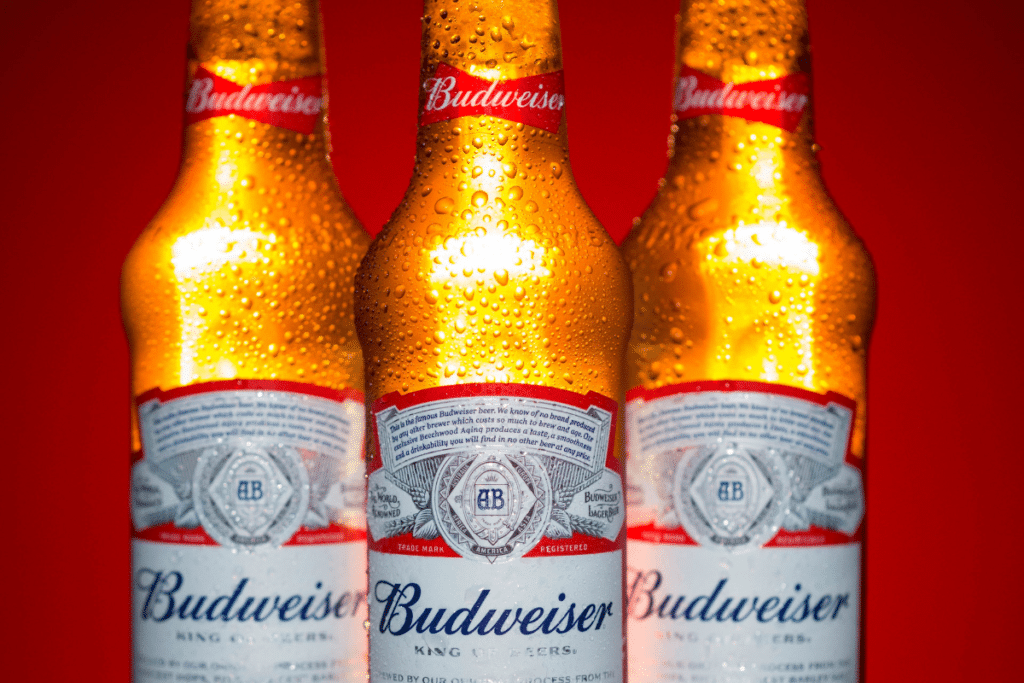
- Anheuser-Busch Budweiser – Advertised as the “King of Beers,” Budweiser or simply Bud is amazingly refreshing after a hot day. The primary characteristic of Budweiser is its slight rice flavor with hints of hop bitterness.
- Pabst Brewing Co. Pabst Blue Ribbon – PBR is another great choice of American Lager. The main flavors are a light grain that provides a smooth drinking experience.
- Miller Brewing Co. Miller High Life – Sometimes referred to as the “Champagne of Beers,” Miller High Life provides a light corn sweetness primarily. Served cold this is a highly refreshing beer.
- Molson-Coors Coors Banquet – One of the stronger characteristics of this beer is its light malt and slight corn flavors. Like the rest, this is a great beer to chill with after a hot day.
Are you interested in what makes beers of the same styles different? My VERSUS series puts popular against each other “head” to “head!”
How to brew a Standard American Lager
Once you’ve explored some great examples of Standard American Lagers you may be thinking of how to brew your own. In order to brew the best beer you need to know the style forward and backward. To that end, I will break down everything you need to know.
This particular style is more technically demanding than others due to its subtle flavor profile. There are no strong flavors or aromas to hide any off-flavors.
Be sure to sanitize as thoroughly as possible!
Let’s start by going over some great choices for the recipe and ingredients. Then, we can look at the process including brew day, fermentation, and bottling.
Recipe and ingredients
While you can’t have beer without fermentation, you can’t get anywhere without quality ingredients. There are of course no wrong ingredients, but some will go together much better than others.
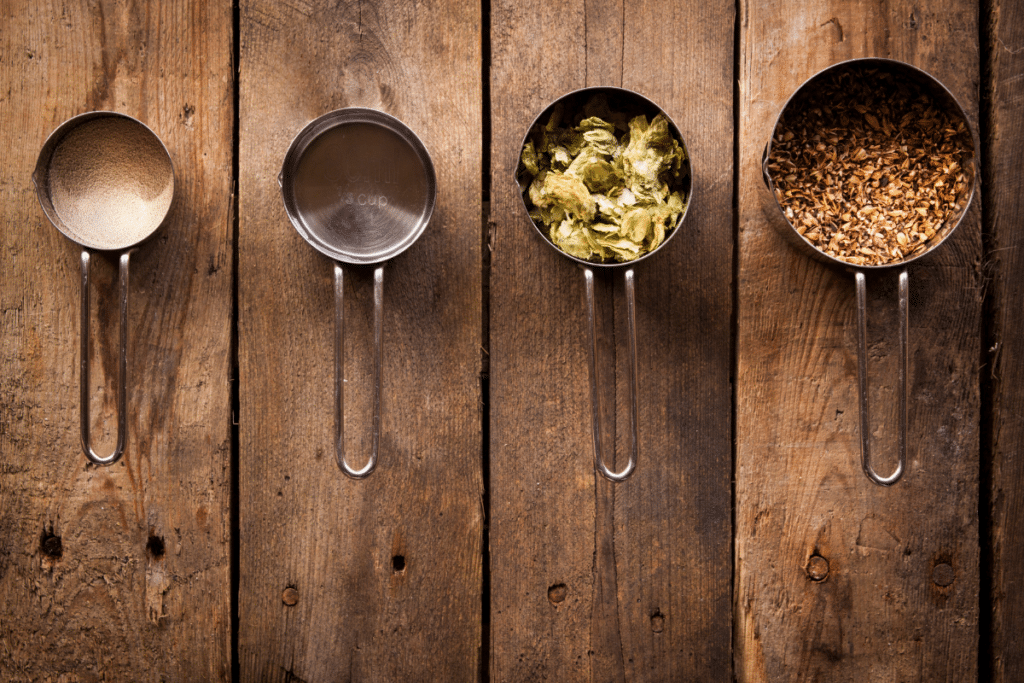
The recipes for this style typically use the same ingredients with some variation here and there:
- Water profile
- Base grains
- Specialty grains – especially rice or corn
- Hops
- Yeast
As always, start with your water. Since beer is nearly 90% water, good water makes good beer. Then consider your grain bill, hops, and finally yeast. Each one can have a significant impact on your final product.
Water profile
In general, good-tasting water produces good-tasting beer. However, a targeted water profile suited to your beer style can make all the difference.
The best water profile for an American Lager is soft with more chlorides than sulfates. You will need to add acid to reduce the mash pH if mashing.
The chlorides will enhance the light malt of the beer and bring it into balance or slightly more favored as compared to any bitterness.
Some brewers may want to favor sulfates over chlorides to enhance hop bitterness for more zing. Keep in mind that this style is highly carbonated which contributes to a sharp, bitter mouthfeel.
If you are not doing an all-grain or partial brew, you don’t need to worry about adding any acid. Alternatively, you can include acidulated malt though this may result in a higher SRM as the quantity of acidulated malt required may be too much to keep the SRM low.
Base grains
This style is incredibly light in color and subtle in flavor. To this end, you don’t need much more than your base grains. Choose the best grains that provide some decent flavor without getting too dark.
The best base grains to use in an American Lager include any basic 2-row or 6-row barley. Pale variations are most typical.
Pilsner malts are an option if you want a little bit more flavor in your American Lager. However, this is generally an addition to a grain bill primarily made up of a pale 2-row or 6-row.
Specialty grains or other additions
Standard American Lagers don’t call for much if any specialty grains.
What you’ll need in an American Lager is an addition of rice, corn, or both. Flaked corn or rice is the preferred addition.
When deciding which adjunct to add, think about your favorite American Lagers. Decide whether you want a slightly fuller body with a little extra sweetness by adding corn, or if you want a more neutral adjunct by adding rice.
These adjuncts can take up to 40% of the grain bill. If you do use this high of a percentage of adjuncts you may need to up your grain bill’s diastatic power by adding a little 6-row malt.
Additionally, consider using acidulated malt to lower the mash pH. This can be a great option to avoid using acid in the mash but can be less exact.
Hops
Standard American Lagers do not have strong hop flavors or aromas. The style does call for a little bit of bitterness but not excessive levels.
Choose American hops or typically neutral hops. American hops are usually the best choice but are not the only option.
Choose hops that have a spicy, floral, or herbal character. This is primarily in the case that some of the flavor and aroma make it into the final product.
Bittering
Bittering hops added early in the boil will go through a process called isomerization. This is what gives a beer its bitterness.
A Standard American Lager calls for anywhere from 8 to 18 IBUs. Since this is not a particularly high IBU count you don’t need hops with extremely high alpha acid concentrations.
Here are some good choices for bittering hops.
| Name | Purpose | Alpha Acid % |
|---|---|---|
| Tettnang | Flavor + Aroma | 2.5-5.5% |
| Saaz | Flavor + Aroma | 2.5-4.5% |
| Chinook | Bittering + Aroma | 12-14% |
| Magnum | Bittering | 12-14% |
Aroma and flavor
Aroma and flavor hops added towards the end of the boil don’t add much bitterness. Instead, they add oils that provide flavor and aroma.
Standard American Lager beers can make use of a small mid-boil addition to add bitterness and flavor.
Here are a few good choices to get you started.
| Name | Flavor/Aroma | Alpha Acid % |
|---|---|---|
| Tettnang | Woody, floral, citrus, cream | 2.5-5.5% |
| Saaz | Woody, floral, citrus, cream | 2.5-4.5% |
| Hallertau | Herbal, woody, floral | 3.5-3.5% |
| Liberty | Floral, spicy | 3-6% |
Yeast
The best yeast to use in a Standard American Lager is one that has medium to high attenuation, high flocculation, and no ester production. Overall, you want a very clean fermenting yeast.
This style truly just needs a yeast that ferments the sugars and that’s all. While hints of yeast flavor are acceptable, they should not be strong. Some of this will be managed by the fermentation temperatures, but it is still important to select the strain carefully.
Dry
Below are some good dry yeast options for a Standard American Lager.
| Name | Attenuation | Flocculation | Temperature Range |
|---|---|---|---|
| SafLager W-34/70 | 80-84% | High | 53-65°F |
| Mangrove Jack’s M54 | 77-82% | High | 64-68°F |
| SafLager S-23 | 80-84% | High | 53.6-64.4°F |
Liquid
Below are some good liquid yeast options for a Standard American Lager.
| Name | Attenuation | Flocculation | Temperature Range |
|---|---|---|---|
| Wyeast 2035 | 73-77% | Medium | 48-58°F |
| WLP840 | 75-80% | Medium | 50-55°F |
| Wyeast 2007 | 71-75% | Medium | 48-56°F |
Brewing process
After acquiring all of your ingredients you can move on to brew day. What you do on brew day can have just as much impact on your results as your choices of ingredients. On brew day, one of the most important aspects is sanitization. Be thorough when sanitizing.
All-grain, partial, and extract brewing each have important considerations for you to make. When doing all-grain or partial brewing you need to consider mashing and sparging. From there the other considerations are similar. The boil step and on is the same for all three.
Let’s break down each step with the Standard American Lager in mind.
Wondering how long you should set aside for your brew day? I’ve got the answer, plus a couple of great tips to keep things moving!
Mashing
The mash for a Standard American Lager should be at least an hour long and between 148°F and 152°F. This low range will make your wort highly fermentable.
You can go lower than 148°F but don’t go too much lower than 145°F. The above range will be more than enough to achieve a highly attenuated beer.
Some homebrewers will use a thin mash with 2.5 quarts of water per pound of grains. This can help improve the conversion efficiency of the mash. That said, a mash thickness of 1.5 quarts per pound will work well.
Boil
After the mash and lauter, prepare for the boil.
A Standard American Lager boil should be a simple hour-long boil. The majority of hop additions will be at the beginning to add bitterness. Some recipes may call for a small hop addition later on to add a hint of flavor and aroma.
You won’t have many hop additions as the IBU range is quite low. This style will also benefit from a fining agent to make the beer as clear as possible.
Whirlpool or flameout
After the boil for your Standard American Lager, you can whirlpool. This step is not essential to the style though it can help collect any trub. Some recipes use this time to add some hops for flavor.
While adding hops to the whirlpool can add flavor and aroma it won’t be necessary for this style. Any flavor you’ll need can be added during the boil.
Fermentation
When fermenting a Standard American Lager you should keep the temperatures on the low end.
Be sure to make a yeast starter to help the yeast along. After fermentation, be sure to lager the beer for three to four weeks. Keeping the fermentation temperatures consistent is key to brewing quality beer.
Keep the temperatures low for the majority of the process. Toward the end of fermentation, you should perform a diacetyl rest.
During the last two days of fermentation, you should raise the temps to roughly 60-65°F. This will give the yeast the kick to remove any diacetyl.
Temperatures
The recommended temperature for primary fermentation is around 50°F to 55°F for a Standard American Lager. A diacetyl rest for a Standard American Lager should be between 60°F and 65°F. Lagering temperatures should be between 32°F and 36°F.
Keep in mind that lower temperatures can help reduce ester production while higher temps increase production. Most of the common yeast strains shouldn’t produce strong esters, but additional management cannot hurt.
Lagering should be done after the diacetyl rest so you should not have to worry about any lingering fermentation. This allows you to drop the temperatures quickly. However, a more traditional (and cautious) approach is to gradually lower the temperatures.
This is meant to prevent the yeast from experiencing a temperature shock. If fermentation is complete this is less of a concern.
Bottling or kegging
The debate between bottling and kegging is strong for some styles but not Standard American Lager.
Bottling or kegging both work well for a Standard American Lager. There is no style preference one way or another. Do what you find easiest.
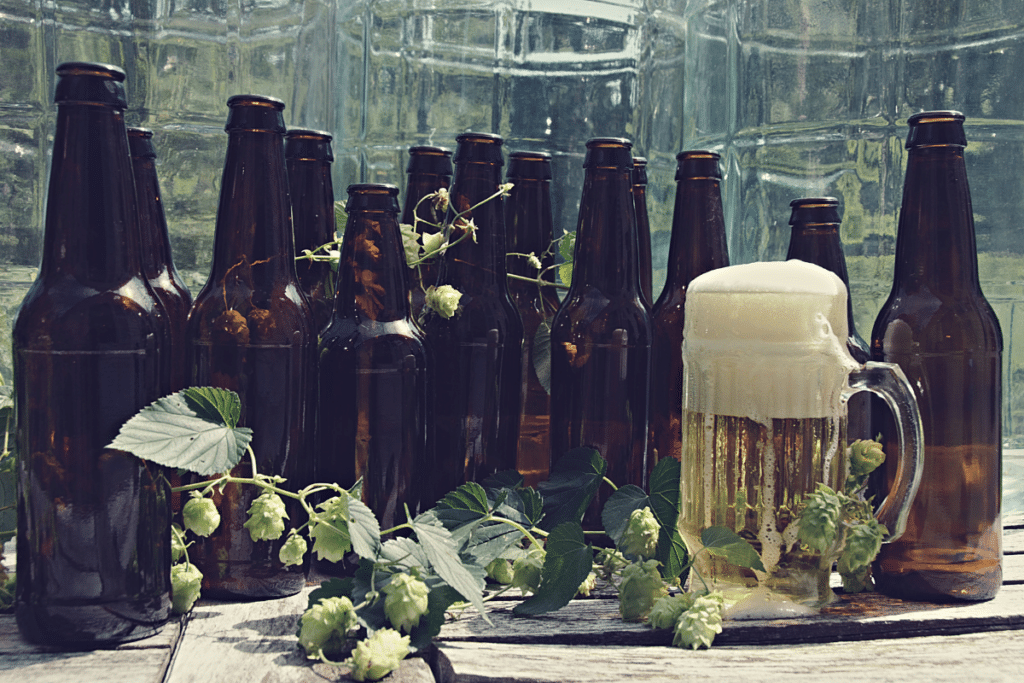
If you find one method easier for lagering, then go with that method.
Standard American Lager recipes
If you aren’t one to create your own recipes, here are a few that you can follow for great results. These recipes are from various brewers as credited below.
- Yuengling Clone (All Grain)
- Rocky Raccoon’s Honey Lager (All Grain)
- Miller Genuine Draft Clone (Extract)
Yuengling Clone (All Grain)
This recipe comes from user MetalMash BrewHaus on Brewer’s Friend.
Before you start brewing this one, you might want to check out this article that goes into detail about what Yuengling tastes like.
Ingredients
- US Pilsner – 8 lb
- Flaked Corn – 1 lb
- US Carapils – 1 lb
- US Caramel 60° L – 8 oz
- Cascade hops – 0.5 oz
- Cluster hops – 0.5 oz
- Whirlfloc
- Yeast Nutrient
- Wyeast 2112
Method
- Heat 3.5 gallons to 90°F.
- Add grain bill and step mash for 15 minutes.
- Increase temperature to 120°F and rest for 15 minutes.
- Increase temperature to 130°F and rest for 15 minutes.
- Increase temperature to 140°F and rest for 15 minutes.
- Increase temperature to 152°F and rest for 1 hour.
- Mashout.
- Collect 8.25 gallons of wort.
- Boil for 90 minutes.
- Add the Cascade at 45 minutes left.
- Add the Whirlfloc and the yeast nutrient at 15 minutes left.
- Add the Cluster at 10 minutes left.
- Flameout and transfer to the fermentor.
- Cool and pitch yeast.
- Maintain 58°F during primary fermentation.
- Perform a diacetyl rest.
- After 1 week in primary transfer to secondary.
- Maintain near-freezing temperatures for 2 weeks to a month.
- Rack to keg or bottles. Enjoy!
Rocky Raccoon’s Honey Lager (All Grain)
This recipe comes from user cacack on Brewer’s Friend.
Ingredients
- German Pilsner – 5.75 lb
- Honey – 2.25 lb
- Cascade – 1 oz
- Mount Hood – 0.5 oz
- Wyeast 1056
Method
- Heat 3 gallons to 132° F
- Add grain bill and step mash for 30 minutes.
- Raise the temperature to 155° F and rest for 30 minutes.
- Mashout.
- Collect 6.61 gallons of wort.
- Boil for 60 minutes. Add the Cascade immediately.
- Flameout then transfer to the fermentor.
- Cool and pitch yeast.
- Maintain 60°F during fermentation.
- Perform a diacetyl rest.
- Transfer to secondary. Lager at near-freezing temps for at least 2 weeks.
- After lagering dry hop with the Mount Hood for 12 days.
- Rack to keg or bottles. Enjoy!
Miller Genuine Draft Clone (Extract)
This recipe comes from user Water’n’Wine Truro on Brewer’s Friend.
Ingredients
- DME Extra Light – 5 lb
- Rice Syrup Solids – 1 lb
- Flaked corn – 1 lb
- Saaz hops – 2 oz
- Wyeast 2035
Method
- Heat 3 gallons of water for your boil.
- Add the flaked corn when the water is around 140°F.
- Remove the flaked corn when the water is around 170°F.
- When a boil is reached, add the malt extract and the rice syrup solids.
- Boil for 60 minutes.
- At 30 minutes left add half of the Saaz.
- At 8 minutes left add the rest of the Saaz.
- Flameout.
- Add water to reach 5.5 gallon batch size. Then transfer to the fermentor.
- Cool and pitch yeast.
- Maintain 50°F during fermentation.
- Perform a diacetyl rest.
- After fermentation, rack to secondary to lager for 2-4 weeks.
- After secondary fermentation, rack to keg and force carbonate or bottle condition.



